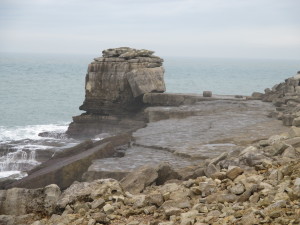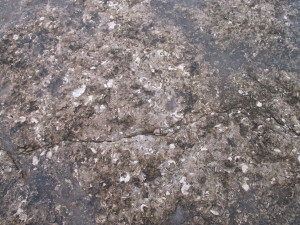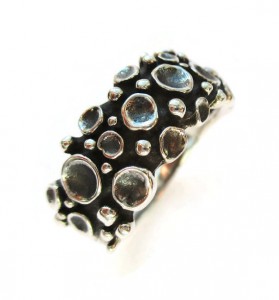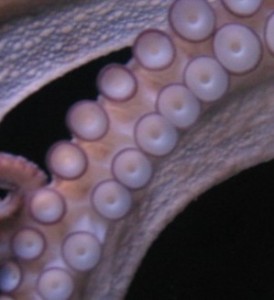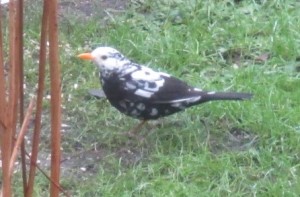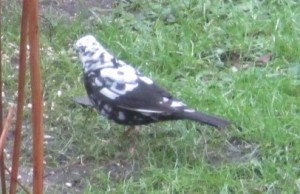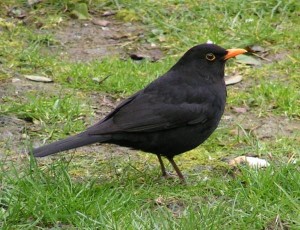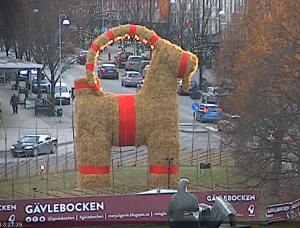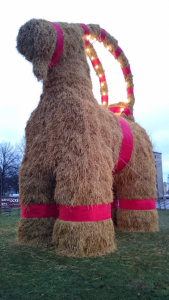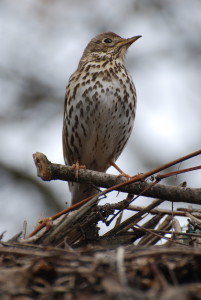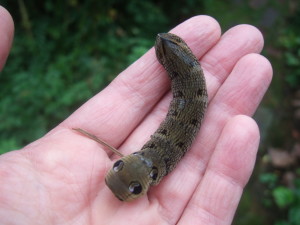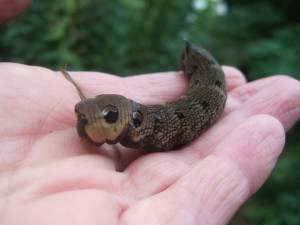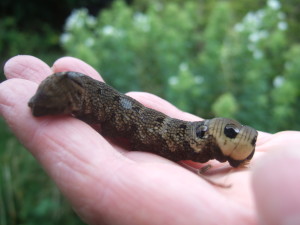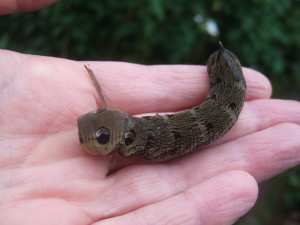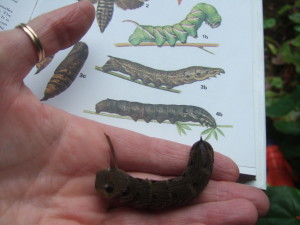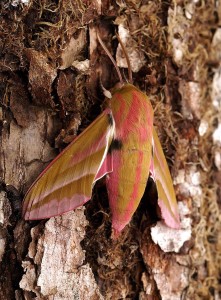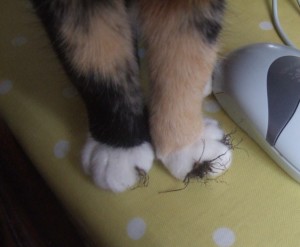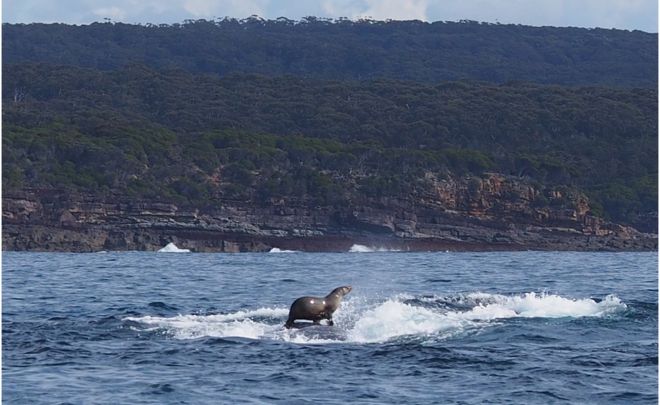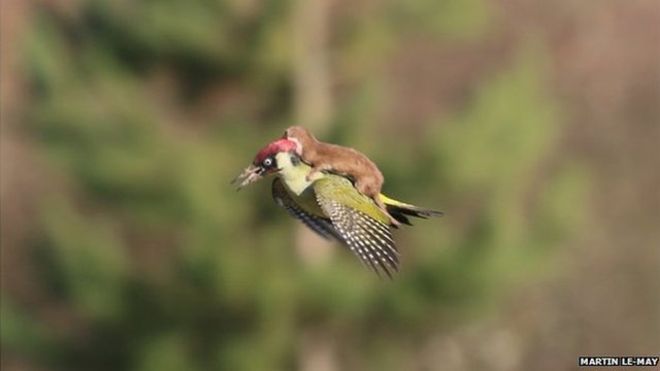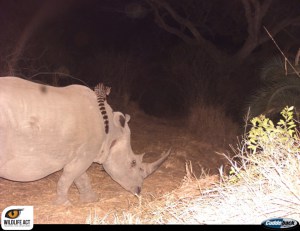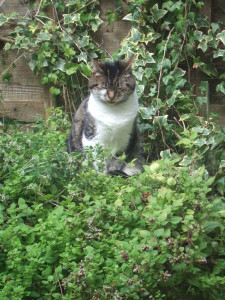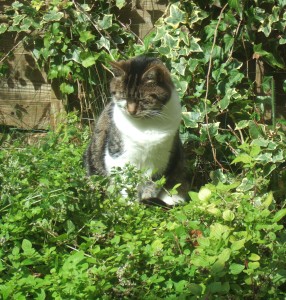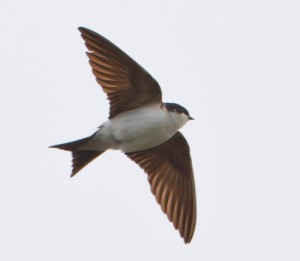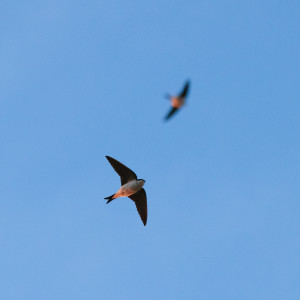Today we went for a walk at Portland Bill, the most southerly point on the Isle of Portland. The Isle of Portland is a strange place, hanging off the bottom of Chesil Beach like a stony teardrop. The island is an outcrop of Jurassic limestone which has been valued as a building stone for centuries. If you know the Tower of London: that’s Portland Stone. And St Paul’s Cathedral. And Buckingham Palace. And the United Nations headquarters building in New York City. And the Auckland War Memorial Museum in New Zealand. I could go on …
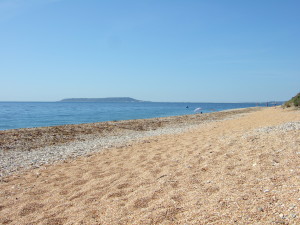
The Isle of Portland seen from Ringstead Bay on a sunny summer’s day in 2012. To the right of the photo is Wyke Regis, near Weymouth. Chesil Beach – a narrow spit of land, or tombolo – joins the two.
Quarrying has created a weird and atmospheric landscape on the island, with worked-out quarries and others that are still in use, and piles of discarded, sub-standard stone and workings piled in heaps and dumped over the edges of the high cliffs.
At the southerly end of the island is Portland Bill, with its two lighthouses to warn ships of the rocks and the deadly currents – the Race – where the water of the English Channel churns around the tip of the island in a furious boiling wash of water. Pulpit Rock is all that remains of a stone arch that was cut away by quarrymen.
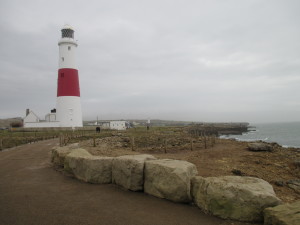
Portland Bill lighthouse, and the other lighthouse (once the home of Marie Stopes) visible in the mid distance.
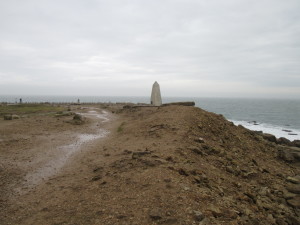
The Trinity House Obelisk, a daymarker to warn shipping off the coast during the day. All the land in the foreground is made ground, waste dumped by the quarrymen in centuries past.
It was a mild and windy day, and we scrambled down to a sea ledge to have a look at the stone and the seascape better.
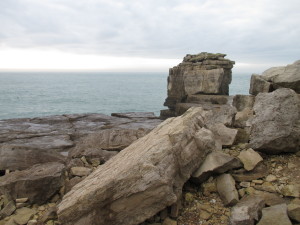
Dumped, rejected stone on a waste heap near Pulpit Rock. The black dot on the water is a cormorant (Phalacrocorax carbo) – we watched it repeatedly dive for food.
Earlier in the day we had been in Weymouth looking for jewellery goodies for my Etsy shop, and met this fellow in the car park:
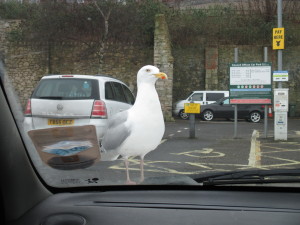
Herring gull (Larus argentatus) on the bonnet of our car in Weymouth.
